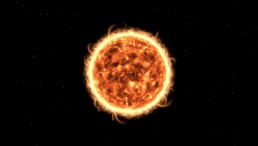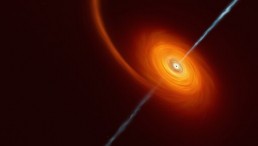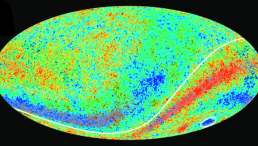Recent reports said that planet Earth is under a Geomagnetic Storm Watch since Sunday. Fortunately, that is not as terrifying as it sounds.
In fact, a Fox 8 report said that some people in these circumstances pack up ride on a plane, but not to safely flee. Rather, they hop on a plane to view what they're expecting as the beautiful result, specifically, auroras or the Northern Lights.
It all begins with a solar burst on the sun's surface, according to NASA, solar flares are abrupt outbursts of energy as an outcome of reorganizing or crossing magnetic field lines close to sunspots.
ALSO READ: Northern Lights Visible in The UK
Solar Flare
Just like this earth having different conditions in the atmosphere from day to day, the sun goes through the same thing.
Solar activity, similar to flares are not extraordinary although some periods of time are far more active compared to others. Both the intensity and size of every flare differs as well.
When the sun expels energy in the form of a solar flare, that particular radiation moves through space and can affect Earth, which is it is being monitored. Essentially, radiation can at times interfere with communications.
When watching solar activity, scientists are watching for a CME or Coronal Mass Ejection, which according to the Space Weather Prediction Center, is a gigantic bubble of radiation erupting into space at such a fast speed.
Sometimes, CMEs occur with a solar flare when the magnetic fields of the sun are reorganizing. When the gigantic bubbles of radiation are making it to the atmosphere of Earth, they can stimulate strong light shows in the sky, also known as auroras. A typical name for them is also called the Northern lights.
Partial Halo CME Identified
In a worst case scenario, the radiation can lead to power and electricity outage. Scientists were able to record a fractional halo CME and determined according to its intensity and size that Earth is likely to experience geomagnetic storm circumstances early to middle of Sunday.
They are expecting G2 or moderate levels of storm, and it is forecasted to result in hours of brilliant aurora. Essentially, G2 storm conditions can stimulate voltage alarms in power systems that the said report specified are "highest above sea level."
The same areas may see damage to transformers during geomagnetic storms that are extended in duration. According to NASA's prediction, that will most likely not see any disruptions as an outcome of this CME. However, they do forecast brilliant aurora, venturing as far south as the United States' northern edge.
The Northern Lights
The National Weather Service describes the Northern Lights also known as the Aurora Borealis, as the result of interactions between the outer atmosphere of Earth and the Sun.
According to Geology.com, the Aurora Autralis is the southern hemisphere matching part to the Northern Lights.
Essentially, the Sun releases electrically charged particles also known as ions, which congruently deviate from the sun in a stream of plasma or ionized gas, identified as the solar wind.
As the plasma comes in contact with the magnetic field of the Earth, the ions sill be disconcerted into moving around this planet.
Some of the ions become stuck and will resultantly interact with the ionosphere of Earth, an average of 60 to 80 miles on top of the surface, causing the ions to glow.
This is the same principle as the manner a neon sign is lighting up. As electrons are passing through the neon tubing, they glow, therefore generating the light in a neon sign.
The aurora constantly change and move in streams of light or curtains, as the process of how the ionized gas of the Sun interacts with the magnetic field of the Earth is quite dynamic.
Lastly, even though not dangerous to life on Earth, the Aurora can result in power disruptions in radio or TV broadcasts and satellite communications.
A similar report is shown on nemesis maturity's YouTube video below:
RELATED ARTICLE: Aurora Borealis May Have Contributed to Sinking of Titanic, Suggests Meteorological Researcher
Check out more news and information on Rare Occurrences on Science Times.
![Apple Is Developing Homegrown Chips to Run AI Tools in Data Centers [Report]](https://1721181113.rsc.cdn77.org/data/thumbs/full/53497/89/56/50/40/apple-is-developing-homegrown-chips-to-run-ai-tools-in-data-centers-report.jpeg)












![China's Chang'e 6 Moon Mission Appears to Include an Undisclosed Mini Rover [See Photos]](https://1721181113.rsc.cdn77.org/data/thumbs/full/53548/258/146/50/40/chinas-change-6-moon-mission-appears-to-include-an-undisclosed-mini-rover-see-photos.jpeg)
